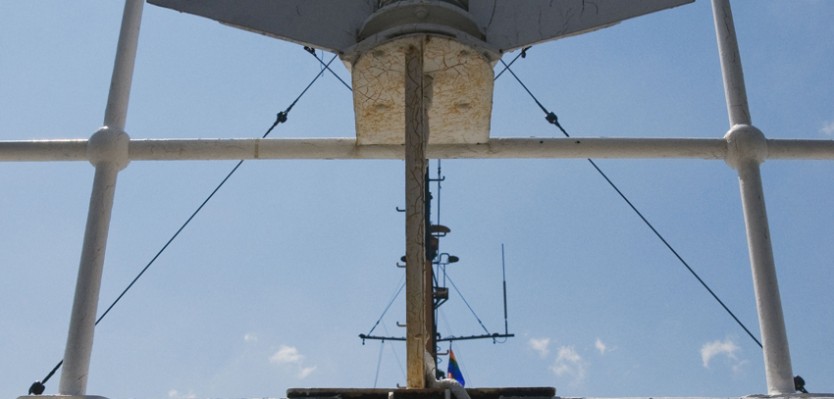
Interview with Molly Surno
Pooja Kakar: What are you planning to present for “DiA on the LILAC”?
Molly Surno: Channeling the masculine and crass tradition of sailor sexuality I will install a motion sensored sound piece. Each time a human body traverses the space of the corridor a barrage of whistles and cat calls will be activated. Despite age, gender, body type, the non-discriminatory sounds of men lusting for passerby’s will be vulnerable to this desire.
PK: How are you planning on utilizing the unique space on the LILAC to showcase your work/create an experience for the viewer?
MS: Taking a playful approach, I am interested in using the unique architecture to alarm the viewer. The boat is designed to inspire navigation and as people move through the space they will encounter my piece. It is not something the viewer looks for, rather the piece looks for the viewer.
PK: Could you explain your process—from the inception of an idea to its execution in an exhibit, in greater detail?
MS: A large part of the work of an artist comes from reading, conversation, and experience. A lot of my time in the studio consists of writing, staring out the window, and reading. My process is based on intuition. For me ideas hit like lightening and I rarely make tests. I try to conflate my life and work practices in order to achieve more electric moments where I translate my activities into formal questions. Bruce Nauman once said, “At this point art [has] become more of an activity and less of a product.” This clarifies my goals for my art process.
PK: Perhaps you can elaborate on your use of different methods of media including photography, video, performance, and sound and how it often describes feminine cultural experiences.
MS: While many of my works deal with the cultural and aesthetic realm of female rituals the work I am making for the LILAC specifically explores masculine desire and sexuality. I am using the medium of sound which is free from the same associations as image in order to provoke the humor and aggression around cat calling.
PK: Can you describe the process of how you realize your work within your studio space and artist residencies? What role does the physical space play?
MS: My work is almost entirely site specific. I construct an installation give the physical and architectural parameters given to me.
PK: You often collaborate with performers, artists, and musicians; how does this outcome differ from your original vision?
MS: When working with a time based medium like film, music, photography or performance you open yourself to the possibility of chance. This for me is the most dynamic part of art making which is also intrinsic to the process of collaborating. Relinquishing all control and allowing the work to move and navigate through time and space always differs from the original.
PK: What projects are you currently working on?
MS: I am currently working on my first solo show that will open in January at Gasser Grunert gallery in New York. The show will include photography, sculpture, film, and sound.
Tags: Journal